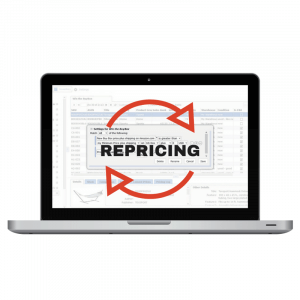Repricing Amazon inventory proves to be a challenge even for the most advanced Amazon sellers. In today’s post we’ll discuss the most popular repricing techniques, and assess their strong points and their disadvantages. Why? So you can make a more informed decision on which repricing option fits your current business needs better.
Read our list of repricing techniques and learn what the most successful Amazon sellers do.
Repricing is bound to pay off, whichever way you look at it. If you don’t feel like you’re getting your money’s worth from your current repricer, or you’re tired of having to take matters into your own hands, here’s a run-down of the main approaches to repricing and when to use them:
Manual Repricing
This is by far the slowest and most time consuming pricing technique. Because it’s dependant on individual analytical skills, it’s also a recipe for errors and missed opportunities. We know from experience that manual repricing is the technique of choice when items are rare, hard-to-find and expensive, so sellers feel in full control of their prices.
Algorithmic Repricing
Many third-party Amazon sellers prefer to take the ‘set it and forget it’ approach and opt for algorithmic repricing. It’s a hands-off alternative that ensures consistent pricing without too much effort.
With algorithmic repricing, there’s a set of specific actions the software will take, when certain market conditions are met, like raising or dropping a price by 10%, changing the price for all the items in question to a certain amount, or fluctuating between two price limits.
Unfortunately, this means that you have no control over the rationale behind your price changes, and whether or not this algorithmic rationale is the best one for your entire inventory, so you’d have less visibility and little leeway for customization.
Still, if you can trust your software to make better decisions and apply them faster than an in-house sales analyst would, then this might be an option for you to consider, bearing in mind the disadvantages mentioned above.
Rule-Based Repricing
Rules offer visibility, flexibility, consistency and room to tweak and improve them based on your dynamic business needs. The flexibility they offer enables you to build your prices on a multitude of variables, such as recommended retail price, lowest market price, a specific competitor’s price, etc. This, in turn, maximizes profits and increases Buy Box eligibility.
Sellery offers a unique feature called the Smartlist. This feature enables sellers to automatically group the inventory into sections based on different criteria that are relevant for their business (sales rank, number of sales or sales velocity, BuyBox status, number of competitors, condition and a lot more). Data is updated dynamically, with inventory items moving from one smartlist to the next when market conditions change. The smartlist a specific item belongs to determines the action Sellery will take based on the pricing rule that applies to that situation.
Rules can be used to filter the competition and only go up against competitors with a certain rating, for example, sifting out the ones customers are less likely to trust. Similarly, they can help you undercut only those sellers who use a certain type of fulfillment channel (FBA or FBM). Also, if the software tool can monitor and adapt to competitors’ offers, then it can also raise your prices as soon as your competitors run out of stock, for instance.
Algorithms and Rules Combined
There’s only so much you can do when using algorithms. A combination of algorithms and rules is a much better approach to repricing your inventory, particularly when your aim is to secure the Buy Box and to increase your Buy Box share.
The algorithmic approach is based on research and observations of “standard” situations (such as research on which is the best variable point to increase or lower your prices to hold the Buy Box) that are then built in a pre-set of repricing actions for your Amazon inventory.
The Rules option, on the other hand, helps you cover ‘not so standard’ situations, where there is no “one-size-fits-all” solution. At the end of the day, your business is unique, so it’s only natural that the algorithmic approach is not the best fit in all circumstances.
Besides, with the rule based technique, you can always look back and understand how your price was calculated (what market condition or which of your settings generated a price change), whereas with the algorithmic approach all you would know is that your price was X at one point. You wouldn’t have a full visual perspective of what determined that price.
Algorithms + Rules + Manual Repricing
For the ultimate control in repricing operations, you can’t go wrong with this trio. Whenever you want to lower or raise prices on specific days for particular items for whatever reason – maximize your shot at the Buy Box, improve your metrics, or even break your own rules to carry out testing – the only way to do it is with an inclusive strategy.
The benefits are threefold, i.e. the efficiency you have from algorithms, the flexibility that rules can offer, and the peace of mind you have from knowing you can always tweak a price yourself. The simplest way to leverage these benefits is by using smart automated repricers – the virtual command centers that safeguard your business operations.
Iulia is one of SellerEngine’s Repricing Experts. She takes pride in being kind and helpful and goes by the saying ”sharing is caring”.
